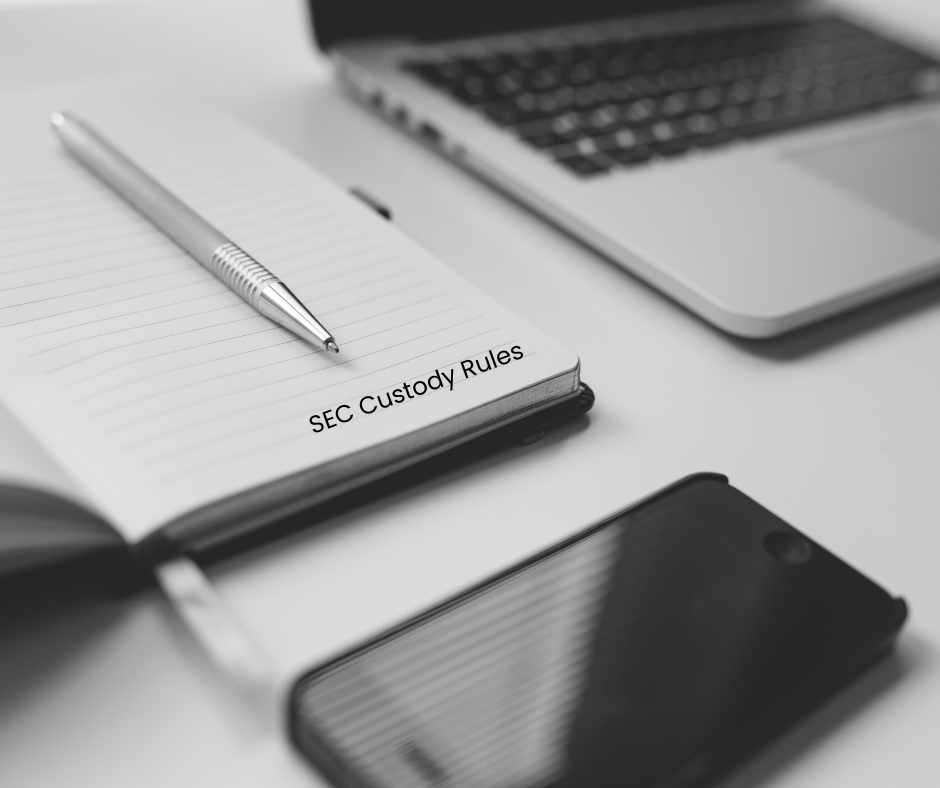Do You Understand SEC Custody Rules?

SEC custody rules can be complex, but compliance is non-negotiable. Many Registered Investment Advisors (RIAs) and broker-dealers unknowingly find themselves in violation of the SEC’s Custody Rule (Rule 206(4)-2), often by simply following a client’s request. Surprise examinations frequently uncover compliance gaps, which can lead to regulatory scrutiny, fines, or reputational damage. To avoid these pitfalls, understanding the key requirements of custody rules is essential for protecting your firm, your clients, and your reputation.
Below, we break down three critical factors every RIA and broker-dealer needs to know about custody compliance.
When Does an RIA Have Custody?
Custody applies when an RIA has direct or indirect control over client funds or securities. This can occur in three primary scenarios:
- Possession of client funds or securities: If an RIA physically holds client funds or securities, custody rules apply. Exceptions include situations where a client writes a check payable to a third party or when an RIA inadvertently receives client funds and promptly returns them.
- Authority to withdraw funds or securities: This includes cases where an RIA has power of attorney or standing letters of authorization (SLOAs). For example, the SEC has clarified that advisors with SLOA authority are deemed to have custody of client assets.
- Legal ownership or access: If an advisor or their firm has legal control over client assets—such as serving as a trustee or executor—custody rules are triggered.
Understanding these triggers is crucial to ensuring compliance. If your firm has direct custody, additional requirements come into play.
Compliance Requirements for Direct Custody
If your firm has direct custody of client assets, the SEC mandates strict compliance measures to safeguard client funds. These include:
- Using a qualified custodian: Acceptable custodians include banks, registered broker-dealers, futures commission merchants, and foreign financial institutions that primarily hold assets for their clients.
- Providing notices to clients: Clients must receive clear and timely notices when their assets are held with a custodian.
- Delivering account statements: Periodic account statements outlining holdings and transactions must be sent to clients.
- Undergoing independent verification: This includes surprise audits by an independent public accountant, submitting Form ADV-E, and addressing any material discrepancies. Firms must also obtain internal control reports when applicable.
Failure to meet these requirements could result in significant penalties and damage to your firm’s reputation. Proactive compliance is key to avoiding these risks.
Understanding Indirect Custody
Even if your firm does not have direct custody, you could still be subject to compliance requirements through indirect custody—when a related person has control over client funds or securities.
If a related person has custody, the responsibility for internal controls shifts to them. However, your firm may be exempt from certain verification requirements if the related person is deemed operationally independent. The SEC evaluates operational independence based on the following factors:
- Client assets in the custody of the related person cannot be subject to claims from the advisor’s creditors.
- Advisory personnel must not have physical custody or the ability to control client assets for personal benefit.
- Advisory personnel and those at the related firm must not share supervision.
- Advisory personnel must not hold positions with the related person or share office space with them.
Failing to properly assess indirect custody risks could result in compliance violations—even if you don’t think your firm has custody.
Why Custody Compliance Matters
SEC custody compliance isn’t just about avoiding penalties; it’s about safeguarding client assets and maintaining trust. By understanding when custody applies, adhering to SEC requirements, and ensuring operational independence for related parties, you can protect your firm and your clients.
If you’re unsure whether your firm is fully compliant, now is the time to take action. Proactive measures, such as conducting internal audits and consulting with compliance experts, can help you avoid costly surprises during an SEC examination. For further guidance, you can review the SEC’s full list of FAQs on custody compliance.
By staying informed and vigilant, you can navigate the complexities of custody rules with confidence and ensure your firm remains in good standing. And if you need help, we are here.
